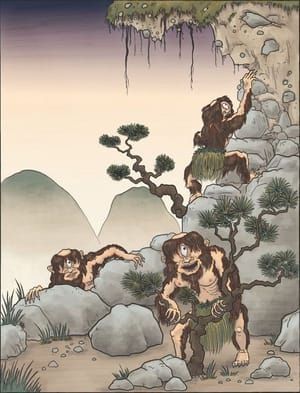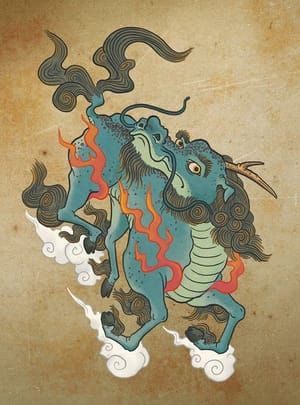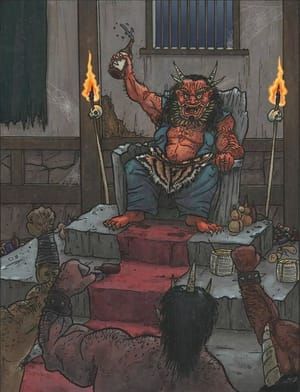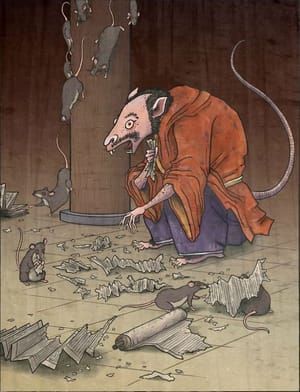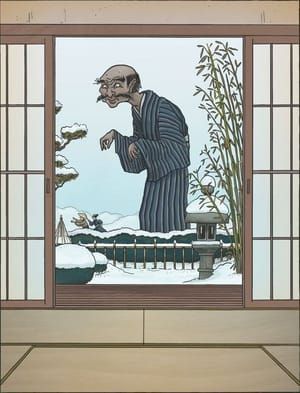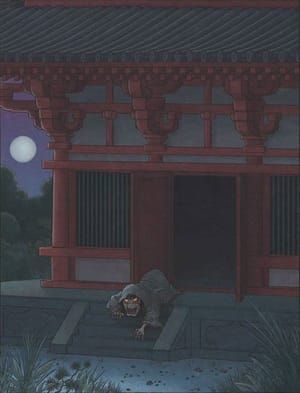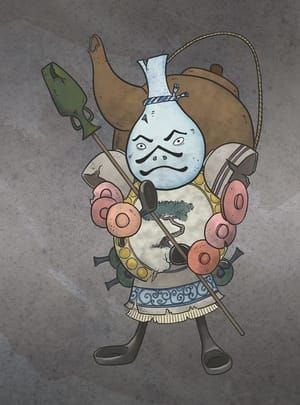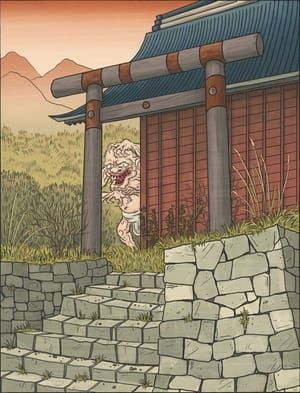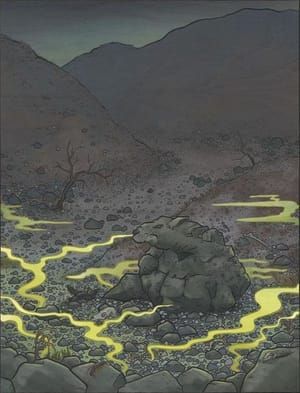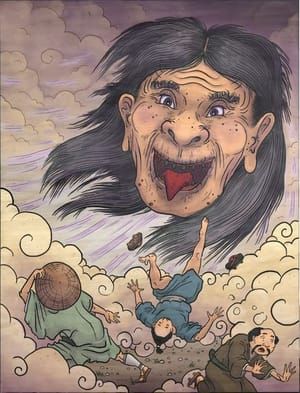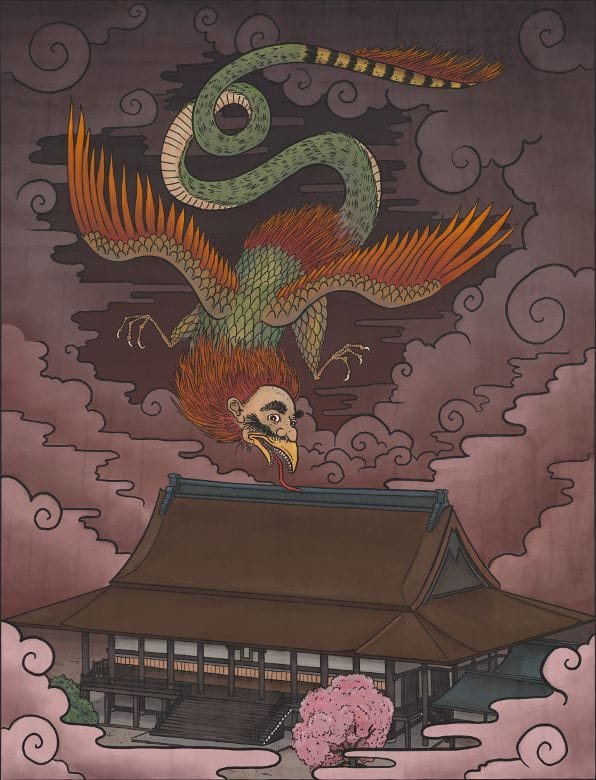

Itsumade, 2014
Matthew Meyer
以津真天
Itsumade are kaichō, or strange birds. They have the face of a human with a pointed beak, and the body of a snake with wings, and terrible claws. Their wingspan is 4.8 meters.
Itsumade appear in the night sky during times of trouble—such as plagues and disasters, or flying over battlegrounds where many have died. In particular, they fly over places where there is suffering or death, yet little has been done to alleviate the pain of the living or pacify the spirits of the dead. The strange birds fly about in circles all night long, crying out in a terrible voice.
Itsumade make their first recorded appearance in the Taiheiki, a fictional history of Japan written in the 14th century. According to the Taiheiki, a terrible plague spread during the fall of 1334. The suffering of the plague victims is what summoned the itsumade.
Itsumade’s name is not written in the Taiheiki; it was added later by Toriyama Sekien. He named this yōkai for its horrible cry of “Itsumademo?” which means, “Until when?” The birds appear to be asking those below how long will this suffering go unnoticed. It is thought that the spirits of the dead and suffering form into onryō which take the shape of these birds. They demand recognition of their suffering and torment.
One night during the fall of 1334, the itsumade suddenly appeared above the hall for state ceremonies, crying out, “Itsumademo? Itsumademo?” Panic erupted amongst the people of the capital. The same creature came back the next night, and every night thereafter. Finally, the imperial court decided that something had to be done. They recalled Minamoto no Yorimasa’s triumph against the nue many years earlier, and decided to summon the warrior Oki no Jirouzaemon Hiroari. Hiroari was an expert archer. He used a signal arrow that let off a loud whistle as it flew, and shot the monster out of the sky. Afterwards, Hiroari was given the name Mayumi, meaning true bow.
Mayumi Hiroari went on to become a famous warrior, and settled down in what is now Mayumi, Miyama City, Fukuoka Prefecture, where his grave still stands. The area was renamed in his honor after he died.
Matthew Meyer
artistArthur
coming soon
